
Dive deep into the essentials of Google Cloud with this comprehensive training course designed for those beginning their cloud engineering careers. Learn to manage and administer scalable, highly available, and secure cloud solutions. The curriculum includes detailed explorations of core Google Cloud services, architectural best practices, and key management tools through interactive labs and collaborative projects, setting a solid foundation for becoming a Google Cloud Engineer Associate.
Google Cloud Engineer Associate Training Interview Questions Answers - For Intermediate
1. Explain the use of Cloud Pub/Sub.
Cloud Pub/Sub is a fully managed real-time messaging service that enables you to send and receive messages between independent applications. It is used to integrate systems hosted on Google Cloud, other clouds, or on-premises systems to achieve event-driven computing architectures.
2. Describe how to secure a Google Kubernetes Engine cluster.
Securing a Google Kubernetes Engine cluster involves implementing best practices such as enabling Role-Based Access Control (RBAC), using network policies to restrict traffic flow between pods, regularly updating images and configurations, and integrating security tools like Google Cloud Security Command Center.
3. What is Data Studio and how is it used?
Google Data Studio is a free tool that turns your data into informative, easy-to-read, easy-to-share, and fully customizable dashboards and reports. It integrates with various data sources like BigQuery, Sheets, and hundreds of external data sources, allowing you to visualize data interactively.
4. What is the purpose of Cloud Deployment Manager?
Cloud Deployment Manager is an infrastructure management service that automates the provisioning and management of Google Cloud resources. Write template and configuration files in YAML or Python, and Deployment Manager will create resources such as VMs, networks, and storage systems as specified.
5. How does Google Cloud support IoT applications?
Google Cloud supports IoT applications through its fully managed service Google Cloud IoT Core, which allows secure device connection and management. It integrates with other Google Cloud services to collect, process, analyze, and visualize IoT data in real-time.
6. Explain the role of AI and machine learning in Google Cloud.
AI and machine learning in Google Cloud are supported through various products like AI Platform, AutoML, and TensorFlow. These tools and platforms allow users to build, train, and deploy machine learning models at scale, with integration into Google Cloud data analytics products.
7. What are Cloud Endpoints and why is it useful?
Google Cloud Endpoints is a distributed API management system that helps developers create, deploy, monitor, and manage APIs on Google Cloud. It provides features like authentication, monitoring, and API keys, facilitating secure and scalable API operations.
8. What are the benefits of using Cloud Functions?
The benefits of using Cloud Functions include its serverless nature, which means there is no need to manage infrastructure, allowing developers to focus solely on writing code. It automatically scales based on the load and only charges for the compute resources consumed during the execution of the function.
9. How would you implement versioning in Google Cloud Storage?
To implement versioning in Google Cloud Storage, you would enable the versioning feature on a storage bucket. This allows you to keep a history of objects in the bucket, providing protection against accidental deletions and overwrites.
10. What is the significance of the Identity-Aware Proxy (IAP)?
The Identity-Aware Proxy (IAP) secures applications and VMs by verifying user identities and the context of their requests before granting access to them. It allows managing access on a per-resource basis without the need for traditional VPNs.
11. How does Google Cloud handle network security?
Google Cloud provides robust network security through features like custom subnets, firewalls, encryption at rest and in transit, Identity and Access Management (IAM), and private networks via Shared VPC to isolate and secure cloud resources.
12. What is the difference between Compute Engine and App Engine?
Compute Engine provides scalable and customizable computing resources in the cloud, allowing you to run large-scale computing workloads on virtual machines. App Engine, however, is a fully managed serverless platform for building and hosting web apps at scale. It abstracts and manages infrastructure so you can focus on code.
13. Discuss how Cloud Billing works in Google Cloud.
Cloud Billing in Google Cloud involves linking a Google account to a project, and setting up billing accounts to manage payments and monitor usage. It provides tools to categorize and track spending and usage trends across projects with detailed reports and cost forecasts.
14. What are custom roles in Google Cloud IAM?
Custom roles in Google Cloud IAM allow you to create tailor-made roles that fit specific security and operational needs of your business, by bundling one or more permissions that aren't covered by the predefined roles offered by Google Cloud.
15. How can you monitor and log events in Google Cloud?
Monitoring and logging in Google Cloud can be performed using Google Cloud Monitoring and Logging services. These tools provide real-time data and operational insight by collecting logs and metrics from various cloud resources, helping in performance analysis, troubleshooting, and security monitoring.
Google Cloud Engineer Associate Training Interview Questions Answers - For Advanced
1. What considerations must be taken when migrating VMs from on-premises to Google Cloud?
When migrating virtual machines (VMs) from an on-premises environment to Google Cloud, several considerations should be addressed:
- Compatibility Assessment: Analyze the compatibility of on-premises VMs with Google Cloud, focusing on aspects like operating systems, network configurations, and dependencies.
- Migration Tools: Utilize Google’s Migrate for Compute Engine (formerly Velostrata), which supports online and offline migration processes, to simplify and accelerate migration while minimizing downtime.
- Optimization: Once migrated, optimize resource allocation based on actual usage patterns to take advantage of Google Cloud’s flexible environment and potentially reduce costs.
- Security and Compliance: Ensure that all data transferred to the cloud is encrypted and that the new environment complies with organizational and regulatory standards.
2. Discuss the use and benefits of Google Cloud's Network Intelligence Center.
Google Cloud’s Network Intelligence Center offers a comprehensive platform for network monitoring, verification, and optimization:
- Visibility and Monitoring: It provides a centralized dashboard that offers real-time visibility into network health, traffic flows, and topology, helping network operators to identify and troubleshoot issues quickly.
- Network Verification: The platform simulates network conditions and predicts the impact of changes on network behavior, thereby reducing downtime and ensuring network reliability.
- Performance Optimization: It recommends optimizations based on usage patterns and configurations, enhancing network efficiency and reducing costs.
3. What are some of the advanced techniques for managing state in Cloud Functions?
Managing state in the inherently stateless environment of Google Cloud Functions involves several advanced techniques:
- External State Management: Utilize external storage solutions like Firestore or Cloud SQL to maintain state across function invocations.
- Caching: Implement in-memory caches or use Memorystore to cache frequent data retrievals and reduce latency.
- Event-Driven Architectures: Design functions to be idempotent and use event-driven architectures to manage application flow and state changes efficiently.
4. How does Google Cloud support real-time data processing and analytics?
Google Cloud provides a robust set of services for real-time data processing and analytics:
- Stream Analytics: Use Google Cloud Dataflow for processing and analyzing streaming data in real time. It integrates seamlessly with other GCP services like BigQuery and ML Engine for comprehensive analytics solutions.
- Real-Time Databases: Firestore and Realtime Database offer real-time data syncing across all clients providing instant access to the latest data updates.
- Edge Computing: Google’s Edge TPU allows AI and machine learning models to run at the edge, reducing latency for real-time data processing applications.
5. Explain the challenges and solutions for maintaining PCI compliance in Google Cloud.
Maintaining Payment Card Industry Data Security Standard (PCI DSS) compliance in Google Cloud involves understanding and implementing the required controls:
- Data Protection: Implement strong encryption for data at rest and in transit using Google Cloud’s encryption capabilities.
- Access Control: Use Google Cloud IAM to tightly control who can access sensitive data based on the principle of least privilege.
- Audit and Monitoring: Utilize Google Cloud Audit Logs to monitor and track access to sensitive data, ensuring all access is recorded and auditable.
- Regular Testing: Regularly test security systems and processes as required by PCI DSS to ensure they are effective and compliant.
6. How does Google Cloud's API Gateway facilitate API management and what are its main features?
Google Cloud's API Gateway is a fully managed service that allows developers to create, secure, and monitor APIs at scale. The main features of API Gateway include:
- Traffic Management: It offers capabilities to handle sudden traffic increases and distribute load effectively.
- Security: Implements strong security measures such as authentication and authorization through integration with Firebase and Identity Platform, and supports HTTPS endpoints to secure data in transit.
- Monitoring and Analytics: Integrates with Google Cloud’s operations suite to provide insights into API performance, error rates, and usage patterns.
- Developer Portal: Provides a customizable interface where developers can discover and test APIs, fostering a collaborative environment.
7. Describe the implementation and benefits of using Google Cloud's BigTable for large-scale data storage.
Google Cloud BigTable is a fully managed, NoSQL, big data database service designed for massive scalability and high performance. Its implementation involves:
- Schema Design: Efficient schema design is crucial, focusing on row key design to ensure even distribution of workload and effective use of BigTable’s capabilities.
- Integration: Easily integrates with Hadoop ecosystems via Cloud Bigtable HBase client for data processing and analytics.
- Scaling: Automatically handles scaling without downtime, providing storage and throughput scalability which is ideal for time-series data, marketing analytics, and real-time application needs.
Benefits include real-time access to data, high throughput and low latency, and seamless integration with other Google Cloud services like BigQuery and Dataflow.
8. Explain how Google Cloud's Identity-Aware Proxy (IAP) enhances security for applications.
Google Cloud's Identity-Aware Proxy (IAP) provides a robust security layer for applications by controlling access based on identity and context. It enhances security through:
- Context-Aware Access: Ensures that only users who meet specific criteria, such as location, device security status, and identity, can access applications.
- Zero Trust Model: Adopts a zero-trust security model by requiring all users, both inside and outside the organization, to be authenticated and authorized.
- Integration with IAM: Seamlessly integrates with Google Cloud IAM for managing policies and access controls, reducing the need for traditional VPNs and simplifying security management.
9. How can Google Cloud’s Firestore be optimized for high-performance read and write operations?
Firestore, a fully managed, NoSQL document database for mobile, web, and server applications, can be optimized for performance in several ways:
- Data Modeling: Design data structures that minimize the need for frequent, complex queries that involve multiple joins and aggregations.
- Index Management: Properly manage indexes to speed up query performance while being mindful of write performance and storage implications.
- Caching Strategies: Implement client-side caching and integrate with Google Cloud Memorystore to reduce read latency and improve overall efficiency.
- Distributed Data: Use Firestore’s multi-region configuration to distribute data across multiple geographic regions, improving access speeds and resilience.
10. What role does Google Cloud Pub/Sub play in event-driven architectures and what are its advantages?
Google Cloud Pub/Sub is a messaging service that enables asynchronous communication between services. In event-driven architectures, it plays a pivotal role by:
- Decoupling Services: Allows services to communicate indirectly through messages, improving scalability and fault tolerance.
- Scalability: Automatically scales to match the volume of messages and number of subscribers, handling millions of messages per second.
- Global Reliability: Offers global message delivery with at least-once delivery guarantees and low-latency message delivery.
Advantages include enhanced application flexibility, reduced coupling between microservices, and the ability to handle large volumes of data in real-time.
11. Discuss the integration of machine learning models with GKE for dynamic scaling.
Integrating machine learning models with Google Kubernetes Engine (GKE) for dynamic scaling involves several key steps:
- Containerization of Models: Package the machine learning models into containers, allowing them to run within GKE.
- Autoscaling: Utilize GKE’s autoscaling capabilities to automatically adjust the number of pods based on the workload, which is particularly useful for handling variable prediction loads.
- Resource Optimization: Leverage GKE's ability to allocate resources like CPU and memory based on the demands of the machine learning model, ensuring optimal performance.
- Continuous Deployment: Integrate with CI/CD pipelines for seamless updates and rollbacks of machine learning models, maintaining model accuracy and performance over time.
12. How does Google Cloud handle multi-tenancy and data isolation in a cloud environment?
Google Cloud supports multi-tenancy and data isolation through a combination of technologies and best practices:
- Virtual Private Cloud (VPC): Provides isolated network environments within the cloud, ensuring that data traffic from different tenants does not intersect.
- Resource Labels and Tags: Allows administrators to segment network resources and apply policies according to tenant-specific requirements.
- Identity and Access Management (IAM): Ensures that users can access only the resources that are pertinent to their operations, maintaining strict data isolation and security.
- Encryption and Key Management: Uses encryption to protect data at rest and in transit, with separate encryption keys managed per tenant to ensure data isolation.
13. What strategies can be employed to manage and reduce costs in Google Cloud Platform?
Effective cost management in the Google Cloud Platform involves several strategies:
- Rightsizing Resources: Regularly analyze and adjust the size of instances and services based on utilization metrics to avoid over-provisioning.
- Budget Alerts: Set up budget alerts in Google Cloud Billing to monitor and control costs proactively.
- Sustained Use Discounts and Committed Use Discounts: Take advantage of these pricing models for resources with predictable usage patterns to reduce costs.
- Delete Orphaned Resources: Regularly identify and remove unused or idle resources, such as unattached disks and unused IPs, which incur costs.
14. Describe how Google Cloud’s Network Telemetry tools can be used to enhance network performance and security.
Google Cloud’s Network Telemetry tools, including VPC Flow Logs and Firewall Insights, provide detailed insights into network performance and security:
- VPC Flow Logs: Captures information about the IP traffic going to and from network interfaces in VPCs, allowing for traffic monitoring, network forensics, and real-time security analysis.
- Firewall Insights: Offers visibility into firewall rule usage and effectiveness, helping to optimize firewall rules and identify misconfigured or unnecessary rules.
- Performance Analysis: These tools help identify traffic bottlenecks and optimize network configurations for enhanced performance.
15. Explain the role of Google Cloud Endpoints in managing APIs for microservices architectures.
Google Cloud Endpoints plays a critical role in managing APIs for microservices by providing a gateway that handles all the tasks associated with accepting and processing hundreds of thousands of concurrent API calls, including:
- Traffic Management: It offers capabilities such as rate limiting and quota enforcement to manage how often APIs can be called.
- Authentication and Authorization: Integrates with Firebase and Google's OAuth 2.0 to control who can access the APIs, ensuring secure access.
- Monitoring and Logging: Provides detailed analytics on API usage and response times, helping to identify and troubleshoot issues.
- API Version Management: Supports multiple versions of APIs, enabling seamless transitions and backward compatibility.
Course Schedule
| Dec, 2025 | Weekdays | Mon-Fri | Enquire Now |
| Weekend | Sat-Sun | Enquire Now | |
| Jan, 2026 | Weekdays | Mon-Fri | Enquire Now |
| Weekend | Sat-Sun | Enquire Now |
Related Courses
Related Articles
- Why SAP BRIM Is a Business Essential?
- SAP Sustainability Control Tower: From Data to Action in Your ESG Strategy
- The Ultimate Training Guide for ABB 800xA DCS
- Enhancing Data Security and Compliance in Snowflake
- Understanding the components of SAP Hybris Cloud for Customer (SAP C4C) - SAP C4C Technical Course and Certification Training
Related Interview
- IBM OpenPages Administration Training Interview Questions Answers
- Workday HCM Interview Questions Answers
- Salesforce Certified Platform Developer I Training Interview Questions Answers
- AVEVA P&ID Administration Interview Questions Answers
- MS-300: Deploying Microsoft 365 Teamwork Training Interview Questions Answers
Related FAQ's
- Instructor-led Live Online Interactive Training
- Project Based Customized Learning
- Fast Track Training Program
- Self-paced learning
- In one-on-one training, you have the flexibility to choose the days, timings, and duration according to your preferences.
- We create a personalized training calendar based on your chosen schedule.
- Complete Live Online Interactive Training of the Course
- After Training Recorded Videos
- Session-wise Learning Material and notes for lifetime
- Practical & Assignments exercises
- Global Course Completion Certificate
- 24x7 after Training Support


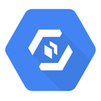





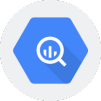
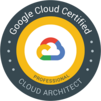
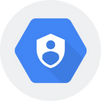

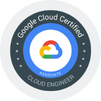

 Join our Live Instructor-Led online classes delivered by industry experts
Join our Live Instructor-Led online classes delivered by industry experts